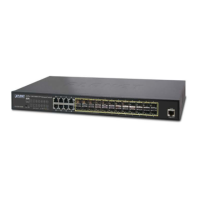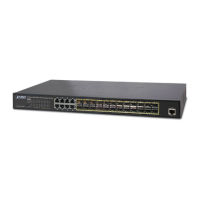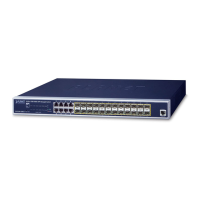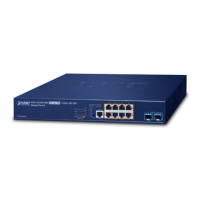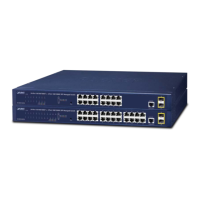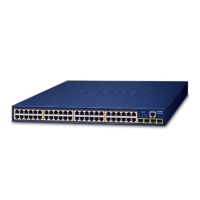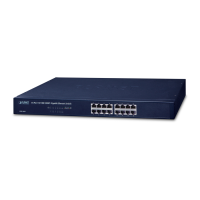User’s Manual of GS-5220 LCD Series
186
VLAN Membership
Status
Displays VLAN membership status
VLAN Port Status Displays VLAN port status
Private VLAN Creates/removes primary or community VLANs
Port Isolation Enables/disablse port isolation on port
MAC-based VLAN Configures the MAC-based VLAN entries
MAC-based VLAN Status Displays MAC-based VLAN entries
Protocol-based VLAN Configures the protocol-based VLAN entries
Protocol-based VLAN
Membership
Displays the protocol-based VLAN entries
4.6.2 IEEE 802.1Q VLAN
In large networks, routers are used to isolate broadcast traffic for each subnet into separate domains. This
Managed Switch provides a similar service at Layer 2 by using VLANs to organize any group of network nodes
into separate broadcast domains. VLANs confine broadcast traffic to the originating group, and can eliminate
broadcast storms in large networks. This also provides a more secure and cleaner network environment.
An IEEE 802.1Q VLAN is a group of ports that can be located anywhere in the network, but communicate as
though they belong to the same physical segment.
VLANs help to simplify network management by allowing you to move devices to a new VLAN without having to
change any physical connections. VLANs can be easily organized to reflect departmental groups (such as
Marketing or R&D), usage groups (such as e-mail), or multicast groups (used for multimedia applications such as
videoconferencing).
VLANs provide greater network efficiency by reducing broadcast traffic, and allow you to make network changes
without having to update IP addresses or IP subnets. VLANs inherently provide a high level of network security
since traffic must pass through a configured Layer 3 link to reach a different VLAN.
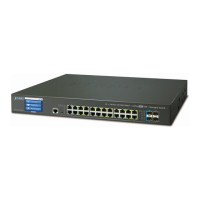
